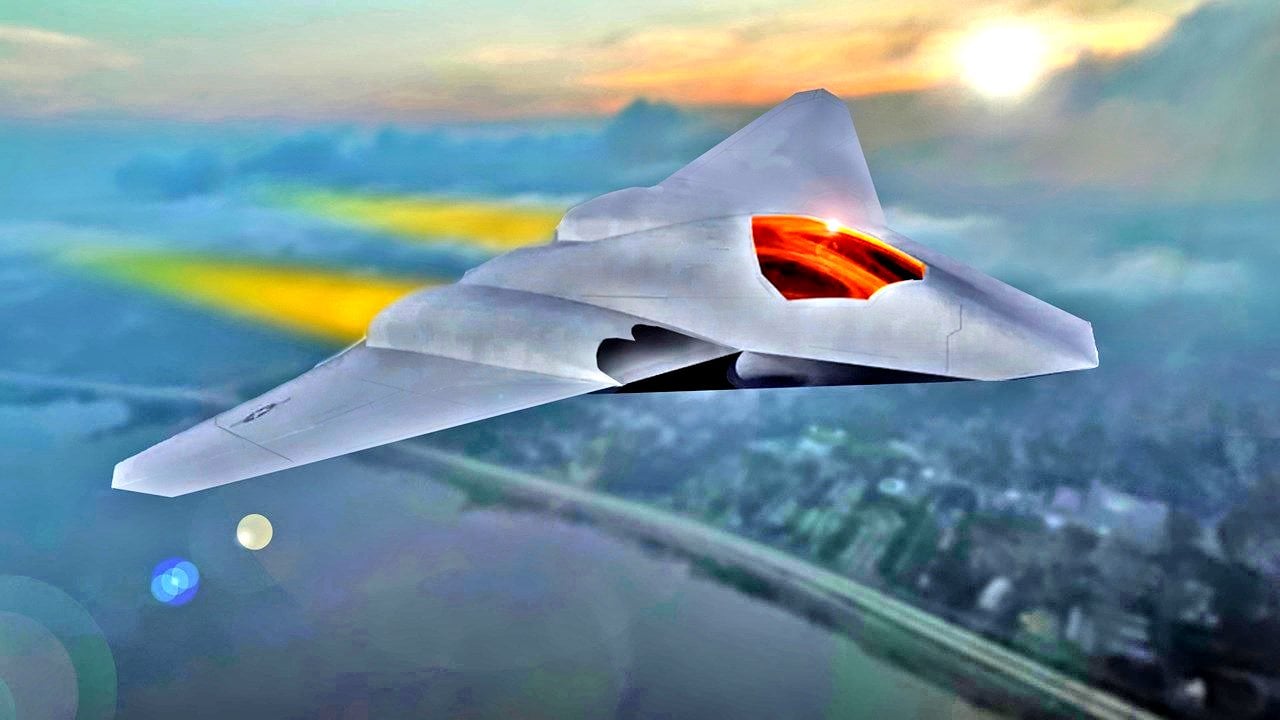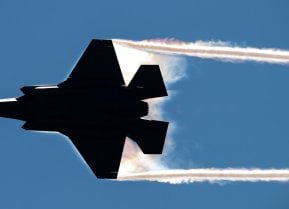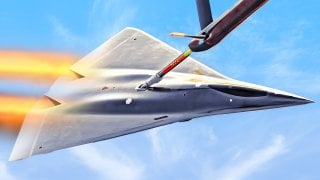Could the 6th Generation NGAD Become a 'Light Fighter'?
There is a growing emphasis on adaptability and modularity in future aircraft designs, potentially leading to a "light fighter" concept that could be more cost-effective and flexible in addressing future threats.
Here Comes the Light Fighter? The Lockheed Martin F-22 Raptor, a fifth-generation air superiority fighter, remains unmatched in its capabilities, yet it was developed during an era when the U.S. military's focus shifted away from near-peer conflicts.
-As global threats evolve, particularly with the rise of China and the resurgence of Russia, the U.S. Air Force is looking towards the Next Generation Air Dominance (NGAD) program to replace the F-22. However, the NGAD faces significant challenges, including its high cost, which could limit fleet size and affect long-term viability.
-There is a growing emphasis on adaptability and modularity in future aircraft designs, potentially leading to a "light fighter" concept that could be more cost-effective and flexible in addressing future threats.
NGAD Becomes Light Fighter?
The United States Air Force remains the sole operator of the Lockheed Martin F-22 Raptor, which despite no air-to-air kills against a manned aircraft has been described as the world's top air superiority fighter. The aircraft, developed at the tail end of the Cold War and entered production following the dissolution of the Soviet Union, could be described as the right fighter just at the wrong time. It wasn't what the U.S. military needed as it became engaged in the Global War on Terror (GWoT) and it seemed that the days of conflict with a near-peer adversary were a thing of the past.
How the times have changed.
The GWoT wasn't ever won and arguably continues as elements like ISIS-K continue to operate – including an alleged planned attack earlier this month on a Taylor Swift concert in Vienna. Yet, even before Russia mounted its unprovoked invasion of Ukraine more than two-and-a-half years ago, it seemed that the "Evil Empire" – the term the late great Ronald Reagan (got it right this time) used to describe the Soviet Union – was returning, or at least in the mind of Russian President Vladimir Putin.
At the same time, China increasingly rattles sabers as it seeks to take its (self-perceived) rightful place on the world stage. To the Chinese Communist Party (CCP) leadership in Beijing, this was to be China's century.
Perhaps the F-22 is what is needed now, except we must remember that it was developed back when Reagan was still eating jellybeans in the Oval Office. This brings us to today, when the Air Force has been exploring a replacement for the Raptor.
Enter the NGAD
The Next Generation Air Dominance (NGAD) program has sought to develop a systems of systems, including a manned sixth-generation fighter supported by unmanned "loyal wingmen." It would seem exactly what is needed for a potential – yet unthinkable – conflict with a near-peer adversary such as China or Russia, and more importantly serve as a deterrent to ensure that such a conflict doesn't start.
The issue is the cost.

Each NGAD manned fighter could cost upwards of as much as three times that of the Lockheed Martin F-35 Lightning II, bringing the total price tag to around $300 million per aircraft. That has led to concerns that the air service would have to reduce the number of aircraft in its fleet, which in turn means that losing any in accidents would be devastating, while critics have warned that combat losses would impact the Air Force's ability to effectively fight future wars.
Damned if You Do, Damned if You Don't
Another concern is that the aircraft developed today may not be the aircraft needed tomorrow. The F-22 Raptor was born out of the Air Force's Advanced Tactical Fighter (ATF) program, which began in 1981! In other words, many of the pilots flying the Raptor today weren't even born when fighters were being designed.
To push that point home, cable TV was still a new thing and VHS was "cutting edge" technology to watch movies in the home. Given the leap forward in technology in recent years, Pentagon officials are right to express concerns that an expensive fighter will be viable in decades to come.
Department of the Air Force Secretary Frank Kendall warned earlier this year that efforts are underway to streamline the NGAD fighter's design, and that could include a "less complex" aircraft equipped with a potentially "smaller engine" that could lower future costs.
"The family of systems concept of Next Generation Air Dominance is alive and well," Kendall told Defense News in an interview. "I can tell you that we are looking at the NGAD platform design concept to see if it's the right concept or not. … We're looking at whether we can do something that's less expensive and do some trade-offs there."
NGAD as a Light Fighter
The NGAD likely will continue, but as noted by Harrison Kass for The National Interest, the evolution of the aircraft could be to a "light fighter." Kass based his analysis on comments made by U.S. Air Force General David Allvin at the Global Air and Space Chiefs' Conference hosted by the UK's Air and Space Power Association in London late in July – where Allvin suggested there needs to be a shift away from a "built to last" philosophy that was commonplace in the Cold War to a "built to adapt" philosophy of today.
"On paper such a shift makes sense. Technology is improving at exponential rates. Modularity is becoming an expectation, allowing airframes to upgrade incrementally with new software and new avionics as technology becomes available. Making rigid technological commitments to a multi-billion-dollar platform that could become outdated in years rather than decades seems foolhardy. An emphasis on adaptability would ensure any new airframe could stick around for a little while," wrote Kass.
The details of such a light fighter are vague, to say the least, and certainly not written in stone. Yet, it should be stressed that Allvin holds an Astronautical Engineering degree from the U.S. Air Force Academy as well as a Master of Science, and Master of Airpower Art and Science degrees.
Given his insight, it may be possible to glean some insight into what the future light fighter could resemble.
"The Light Fighter would be built on adaptability, not ruggedness," wrote Kass. "Allvin envisioned a jet that would rely on open systems architecture, modular design, digital engineering, and 3d-printing/additive manufacturing – techniques and concepts to improve an airframe repeatedly over time."
So could we see a sixth-generation light fighter in the future? Time will tell, of course, but it is also as likely that the NGAD could go another direction – focused more on an entirely unmanned system controlled remotely. Perhaps the days of pilots in the cockpits of fighter planes will be a relic of the past… much like those old VHS players that were the rage when the F-22 was still on the drawing board.
Author Experience and Expertise: Peter Suciu
Peter Suciu is a Michigan-based writer. He has contributed to more than four dozen magazines, newspapers, and websites with over 3,200 published pieces over a twenty-year career in journalism. He regularly writes about military hardware, firearms history, cybersecurity, politics, and international affairs. Peter is also a Contributing Writer for Forbes and Clearance Jobs. You can follow him on Twitter: @PeterSuciu. You can email the author: [email protected].
Image Credit: Creative Commons.


